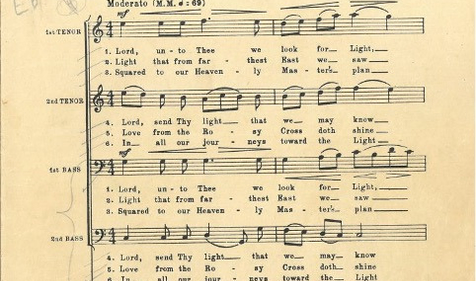In the United States, there still exists a sub-culture of suspicion against Masons which began nearly 200 years ago when the country’s anti-Masonic movement emerged; a subject critically important to understanding the history of Freemasonry in America.
What does it mean to be a Freemason? It means being a man committed to self-improvement; to bettering his community and the world. To embark on a lifelong quest for more light by upholding the ideals of Brotherly Love, Relief, and Truth. Being a Freemason requires living a life of integrity, and displaying graciousness through acts big and small each day.
Today, as more resources become available on the web, and as Netflix documentaries, mainstream news publications, and even our own Scottish Rite blog teach the world about our fraternity, more people are beginning to understand what it really means to be a Mason. While the specifics of Masonic ritual may remain secret, the values that define our brotherhood have never been more public.
Sadly, there have been episodes throughout Masonry’s long history where this lack of understanding led to persecution against Freemasons. In the United States, there still exists a sub-culture of suspicion against Masons which began nearly 200 years ago when the country’s anti-Masonic movement emerged; a subject critically important to understanding the history of Freemasonry in America.
A Perfect Storm
Freemasonry has had an active membership base since the United States was first established. Indeed, many of our Founding Fathers were proud Masons themselves, and membership continued to grow tremendously throughout the early 19th century.

Its apex came in 1826 when a bricklayer named William Morgan mysteriously disappeared in New York after supposedly breaking his Masonic vow of secrecy for intending to publish a book exposing Masonic ritual. Freemasons in Morgan’s town were considered responsible for his disappearance, ultimately being tried and convicted in court of kidnapping him. However, the sentencing these men received was considered too light amongst those who believed them to be guilty.
While anti-Masonic sentiment existed prior to this episode, the results of the trial bred contempt among many everyday people who were beginning to see Masons as men who held themselves above the law. The sentencing only brought more resentment, causing it to spread throughout the Northeast.
The Anti-Masonic Party
As the anti-Masonic fervor spread, it ultimately took shape in the form of an official U.S. political entity: the Anti-Masonic Party. As the name indicates, its platform was specifically built on the mission of trying to eliminate Freemasonry in the United States. Sadly, it was quite successful, almost snuffing out Freemasonry’s presence entirely throughout the country.
For years, unfounded conspiracies continued to spread accusing Masons of unlawful acts. Many women joined the movement and successfully convinced their husbands to resign. Life was made difficult for Masons - lodges were defaced, business relationships were severed and many men were even attacked in public. Countless Masons left the craft to protect themselves and their reputation, including high-ranking officials. The fallout caused hundreds of lodges to cease operations altogether.
The Anti-Masonic Party grew quickly and powerfully. Some politicians truly believed Masonry was bad for the country, while some saw the movement as an opportunity to exploit for personal gain, joining the party to further personal political ambitions. Before long, the party took root deep in both federal and state bodies.

In Vermont and Pennsylvania, Anti-Masonic Party candidates won high-profile elections and served as Governors and congressmen. The state legislature in Pennsylvania even went so far as to hold hearings on the evils of Freemasonry. By 1832, the party had gained enough support to put forth a candidate for president: William Wirt, a former Mason himself.
Naturally, a single-issue party such as this would not maintain momentum for long. Over time, politicians and voters within the Anti-Masonic Party melded with other parties, including the Whig Party and the new Republican Party. By the 1840s, much of the damage was done and even the most ardent of anti-Masonic supporters were satisfied with the extent to which they had suppressed Freemasonry throughout the country.
A Lasting Impact
There is no denying how successful the Anti-Masonic Party was in its endeavors. In only 10 years, it is estimated the number of Masons in the United States dropped by more than half from a high of 100,000 men before the movement. Grand Lodges shuttered in several states and for many, it took decades before they were rechartered. A significant number of now-former Masons were traumatized by years of being demonized, causing them to give up the craft entirely.
Freemasonry Endures
It took time for Freemasonry within the United States to heal from these wounds, but the ideals and of our brotherhood never ceased to resonate with the men of our country. Men continue to aspire to lives of honor, integrity, and generosity, and to do it alongside men of character who support each other every step of the way. More people are learning what it means to be a Mason through our local charitable events, open houses, or through digital resources online.
Despite our sometimes painful history, our great fraternity has endured; every year in nearly every city and town across America, thousands of men continue to join the ranks of Freemasonry. Men of honor and integrity. Of charity and obligation. Each with a vow to be the best they can be. To be more than just a man. To be a Mason.
Related Stories
Discover additional Scottish Rite blogs and news on this topic.



